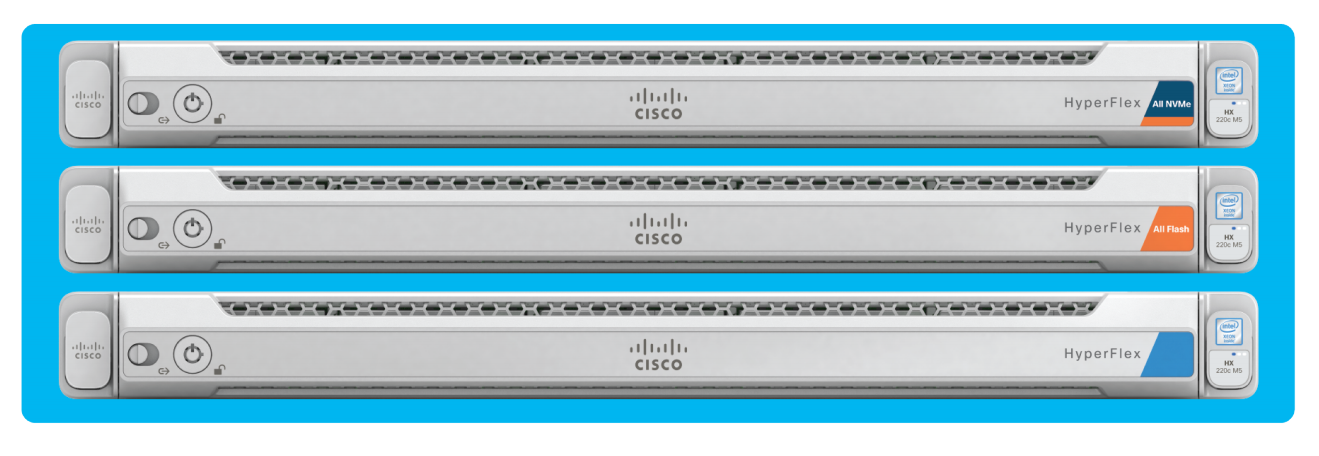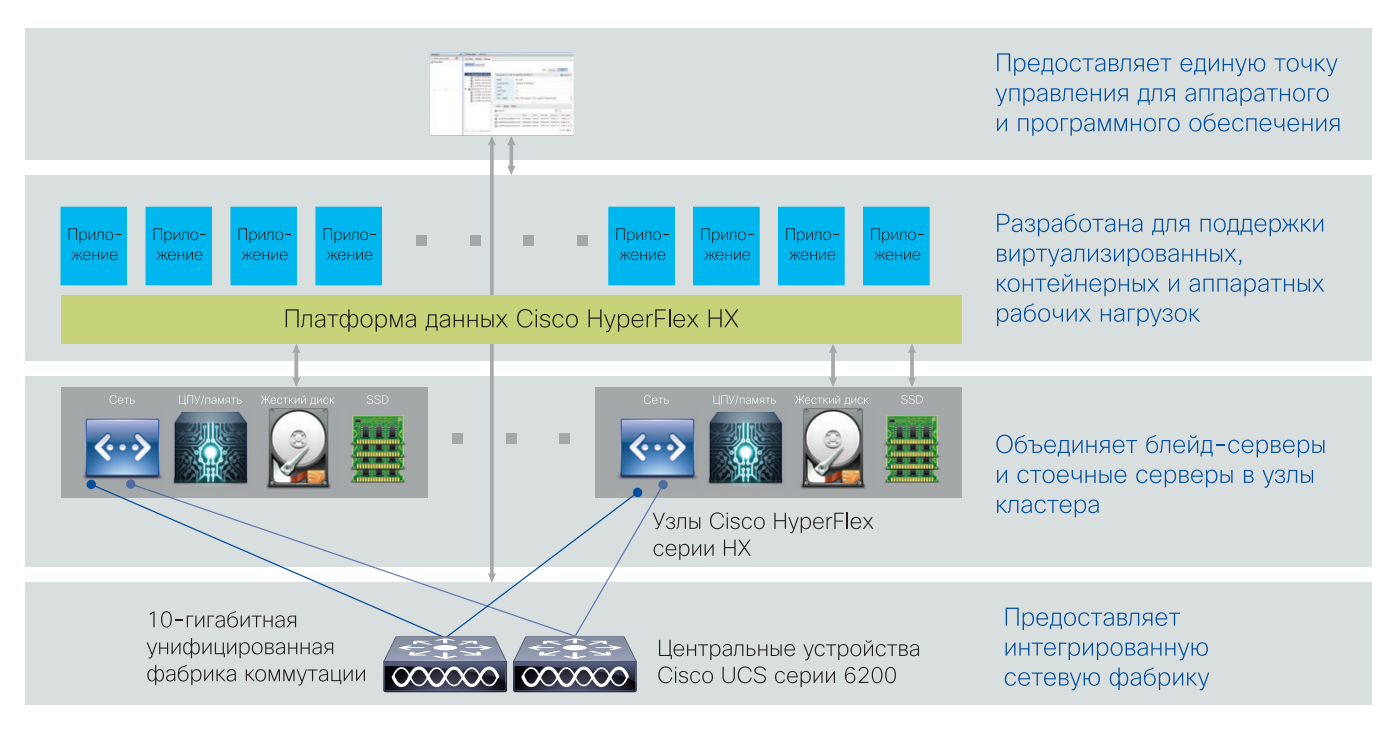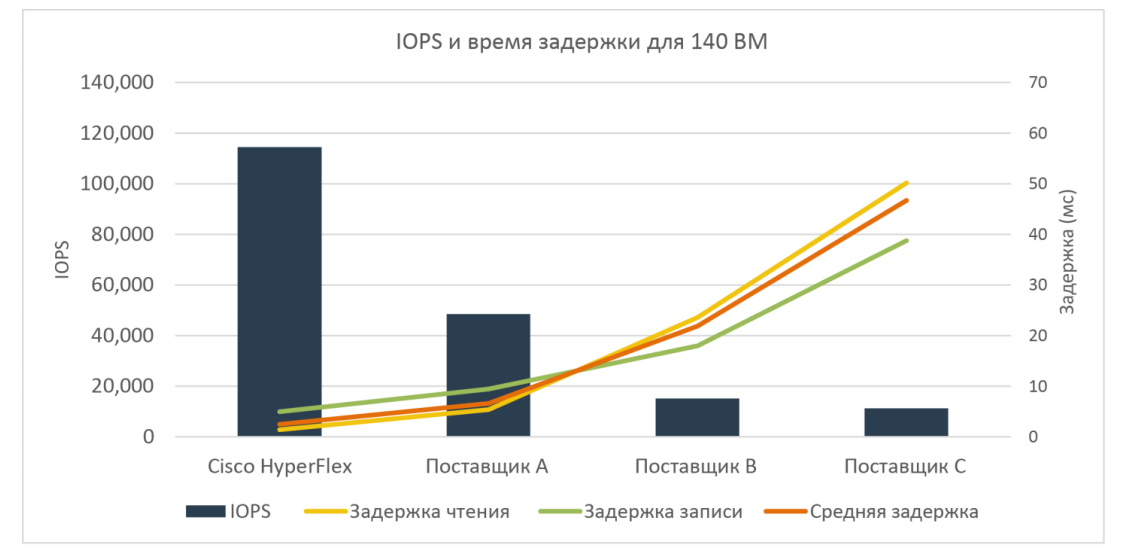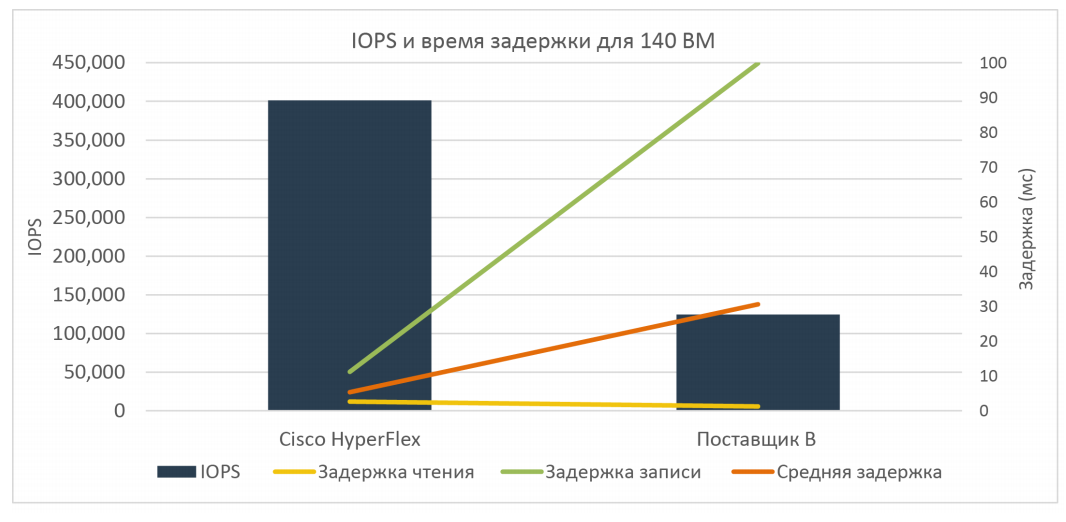Cisco HyperFlex in action
From November 2018, Cisco is launching a series of demonstrations of the new Cisco HyperFlex hyperconvergent solution in the Russian regions. You can sign up for a demonstration via the feedback form by clicking on the link. Join now!
• Ekaterinburg - until the end of November 2018
• Tomsk, Novosibirsk, Krasnoyarsk, Omsk - November 20, 2018 - December 30, 2018
• Vladivostok, Yuzhno-Sakhalinsk: January 21, 2019 - February 2019.
Cisco HyperFlex is the latest hyper-converging system that solves the problem of the high complexity of fault-tolerant data center systems and corporate infrastructures.
')

The traditional approach to building a data center is based on the separation of servers, storage network and storage systems. This approach makes the infrastructure extremely complex and expensive.
Cisco HyperFlex is essentially a “data center in a box” that integrates computing infrastructure, virtual machines, and storage into a single fault-tolerant and high-performance infrastructure.

HyperFlex is also an extremely simple solution for implementation and allows you to organize a highly available IT infrastructure from scratch in the shortest possible time from just 3 servers.
Back in 2017, the Independent Laboratory of the Enterprise Strategy Group (ESG Lab) conducted comparative tests of Cisco HyperFlex performance and competitive solutions.
Tests were conducted using HCIBench, which is a standard industry tool for testing hyperconvergent solutions. At the core of HCIBench is Oracle Vdbench, which emulates the workload on virtual machines.
Tests were conducted for two scenarios: hybrid and all-flash.
For the hybrid scenario, a four-node HyperFlex HX220c cluster was used with one 480 GB SSD for cache and six 1.2 TB SAS disks on each node of the cluster (total 4xSSD + 24xSAS HDD). The load was generated from 140 virtual machines (35 per cluster node), with 4 vCPU, 4 GB RAM and virtual HDD 20 GB (total for cluster 560 vCPU, 560 GB RAM, 2800 GB HDD).
During testing, different load profiles were used, but always with 100% random data, which is most typical for environments with a large number of virtual machines.
The most interesting test was the measurement of delays relative to IOPS values with a read / write ratio of 70% / 30% and a 4k block, full random.
The results are shown in the figure below:

As can be seen from the results, the HyperFlex hybrid variant is more than twice the nearest competitor (~ 120,000 IOPS against ~ 60,000 IOPS).
If we look at the All-flash scenario test, then the same load was tested, but the four-node HyperFlex HX220c cluster was used from SSD disks only (one SSD 400 GB for cache and six SSD 960 GB for data, totally 4xSSD 400GB + 24xSSD 960 GB for the entire cluster). The alternative provider used a similar configuration.
With the same load profiles (read / write ratio 70% / 30% and block 4k, full random) the results were as follows:

As a result, with All-flash scenarios, the HyperFlex solution has already surpassed its closest competitor by three times (400,000 IOPS versus 150,000 IOPS).
The full version of the HyperFlex Testing Report from ESG Lab is available at the link below:
www.cisco.com/c/dam/global/ru_en/products/hyperflex/pdf/esg_lab_validation_cisco_hyperflex.pdf
Since the moment of independent testing from ESG lab, a year has passed, and since then new features have appeared in HyperFlex - a stretched cluster, support for the development platform from Kubernetes, and recently SAP has certified HyperFlex for SAP HANA.
Thus, Cisco HyperFlex became the first hyperconvergent solution certified in all three SAP processing load classes: SAP Applications, SAP Data HUB and HANA.
This once again confirms that HyperFlex combines high reliability, performance and unprecedented ease of use.
• Ekaterinburg - until the end of November 2018
• Tomsk, Novosibirsk, Krasnoyarsk, Omsk - November 20, 2018 - December 30, 2018
• Vladivostok, Yuzhno-Sakhalinsk: January 21, 2019 - February 2019.
Cisco HyperFlex is the latest hyper-converging system that solves the problem of the high complexity of fault-tolerant data center systems and corporate infrastructures.
')

The traditional approach to building a data center is based on the separation of servers, storage network and storage systems. This approach makes the infrastructure extremely complex and expensive.
Cisco HyperFlex is essentially a “data center in a box” that integrates computing infrastructure, virtual machines, and storage into a single fault-tolerant and high-performance infrastructure.

HyperFlex is also an extremely simple solution for implementation and allows you to organize a highly available IT infrastructure from scratch in the shortest possible time from just 3 servers.
Back in 2017, the Independent Laboratory of the Enterprise Strategy Group (ESG Lab) conducted comparative tests of Cisco HyperFlex performance and competitive solutions.
Tests were conducted using HCIBench, which is a standard industry tool for testing hyperconvergent solutions. At the core of HCIBench is Oracle Vdbench, which emulates the workload on virtual machines.
Tests were conducted for two scenarios: hybrid and all-flash.
For the hybrid scenario, a four-node HyperFlex HX220c cluster was used with one 480 GB SSD for cache and six 1.2 TB SAS disks on each node of the cluster (total 4xSSD + 24xSAS HDD). The load was generated from 140 virtual machines (35 per cluster node), with 4 vCPU, 4 GB RAM and virtual HDD 20 GB (total for cluster 560 vCPU, 560 GB RAM, 2800 GB HDD).
During testing, different load profiles were used, but always with 100% random data, which is most typical for environments with a large number of virtual machines.
The most interesting test was the measurement of delays relative to IOPS values with a read / write ratio of 70% / 30% and a 4k block, full random.
The results are shown in the figure below:

As can be seen from the results, the HyperFlex hybrid variant is more than twice the nearest competitor (~ 120,000 IOPS against ~ 60,000 IOPS).
If we look at the All-flash scenario test, then the same load was tested, but the four-node HyperFlex HX220c cluster was used from SSD disks only (one SSD 400 GB for cache and six SSD 960 GB for data, totally 4xSSD 400GB + 24xSSD 960 GB for the entire cluster). The alternative provider used a similar configuration.
With the same load profiles (read / write ratio 70% / 30% and block 4k, full random) the results were as follows:

As a result, with All-flash scenarios, the HyperFlex solution has already surpassed its closest competitor by three times (400,000 IOPS versus 150,000 IOPS).
The full version of the HyperFlex Testing Report from ESG Lab is available at the link below:
www.cisco.com/c/dam/global/ru_en/products/hyperflex/pdf/esg_lab_validation_cisco_hyperflex.pdf
Since the moment of independent testing from ESG lab, a year has passed, and since then new features have appeared in HyperFlex - a stretched cluster, support for the development platform from Kubernetes, and recently SAP has certified HyperFlex for SAP HANA.
Thus, Cisco HyperFlex became the first hyperconvergent solution certified in all three SAP processing load classes: SAP Applications, SAP Data HUB and HANA.
This once again confirms that HyperFlex combines high reliability, performance and unprecedented ease of use.
Source: https://habr.com/ru/post/430572/
All Articles